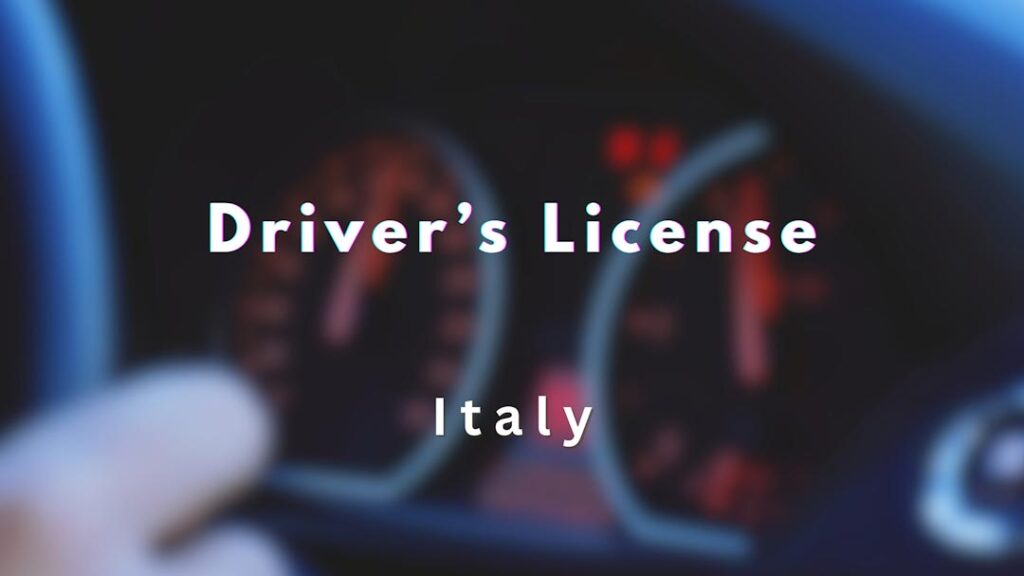
Getting a driver’s license in Italy as a foreigner may feel complicated, but the steps are clear once you know the sequence. The process depends on whether you can convert your existing license or need to apply for a brand-new Italian one.
For information about car ownership, rentals, and related rules, see our dedicated section: Car transport in Italy.
Table of Contents
- Step 1: Check if you can drive with your current license
- Step 2: Make sure you are resident in Italy
- Step 3: Get a medical certificate
- Step 4: Apply for the learner’s permit (foglio rosa)
- Step 5: Pass the theory test
- Step 6: Practice driving
- Step 7: Take the driving exam
- Step 8: Know the rules for new drivers
- Temporary alternative: Driving with your foreign license
- Key takeaways
- See Also
Step 1: Check if you can drive with your current license
Before starting any paperwork, verify whether your current license is valid in Italy:
• EU/EEA licenses – These are valid throughout Italy. You can drive with them without restrictions. After two years of residency, you may exchange it for an Italian license, but this is optional.
• Non-EU licenses with agreements – Some countries have deals with Italy that allow direct conversion of your license. No exams required, just paperwork. Examples: Switzerland, the UK, Canada (only certain provinces).
• Other non-EU licenses – If no agreement exists, you can drive with your foreign license plus an International Driving Permit (IDP) for up to one year after registering residency. After that, you must apply for a new Italian license.
Step 2: Make sure you are resident in Italy
You need to be officially resident to apply. This means registering at your local comune and obtaining a residence certificate (certificato di residenza). Without it, the Motorizzazione Civile will not accept your application.
If you are not yet familiar with local driving restrictions, check our guide to ZTL zones in Italy.
Step 3: Get a medical certificate
A medical certificate (certificato medico) confirms you are fit to drive. It must include a recent passport-style photo and results of basic health checks, such as eyesight.
You can request it from:
• Authorized GPs.
• The local health authority (ASL).
• Doctors linked to driving schools or motoring agencies.
Step 4: Apply for the learner’s permit (foglio rosa)
With the medical certificate in hand, you can apply for a learner’s permit. This is done through the Motorizzazione Civile or via a driving school (autoscuola).
You will need:
• Proof of residence.
• A valid ID.
• Your tax code (codice fiscale).
• The medical certificate with photo.
• Two additional photos.
• Payment receipts for government fees.
The foglio rosa lasts 12 months and allows you to practice driving with a licensed instructor or with a supervisor who has held a license for at least 10 years and is under 65.
Step 5: Pass the theory test
The theory test covers road signs, speed limits, priority rules, and general driving behavior.
• It is computer-based and usually taken in Italian, though some offices offer other languages.
• The format is multiple-choice.
• You must pass before attempting the practical exam.
Many foreigners prefer to register with a driving school because of the language barrier and because the rules are taught in a structured way.
Step 6: Practice driving
Once you have your foglio rosa, you can start practicing. Expect to drive in mixed conditions: city traffic, rural roads, and highways. Practice is crucial because the examiners are strict.
If you don’t own a car, see our guide to Car rentals in Italy for options.
Step 7: Take the driving exam
The practical exam (esame di guida) usually lasts 30–40 minutes and is carried out on public roads. The examiner checks:
• Control of the car (starting, parking, hill starts).
• Knowledge of signs and compliance with rules.
• Confidence in different traffic conditions.
If you pass, you receive a temporary paper license immediately. The official card license (patente di guida) will arrive by mail.
Step 8: Know the rules for new drivers
For the first three years after obtaining your license, you face additional restrictions:
• Zero alcohol tolerance.
• Limits on driving high-powered cars.
• A stricter points system: infractions lead to faster penalties.
Temporary alternative: Driving with your foreign license
If you are in Italy only for a short period, you can usually rely on your home license plus an International Driving Permit. Only long-term residents need to go through the Italian licensing process.
Key takeaways
• EU/EEA licenses are valid in Italy, conversion optional after two years of residency.
• Some non-EU licenses can be exchanged directly; others require the full Italian process.
• Residency in Italy is a mandatory first step.
• You need: a medical certificate, a learner’s permit, theory test, practice, and practical exam.
• New drivers face stricter limits for three years.
By following these steps, foreigners can move through the Italian licensing system without surprises.
